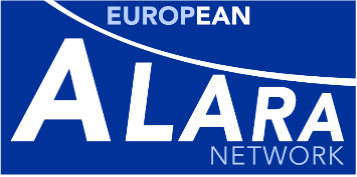Christian Lefaure - IAPORP rapporteur, Jizeng MA - IAEA, Shengli Niu - ILO
Some findings and recommendations from the Geneva Conference (2002)
In August 2002, the IAEA/ILO Geneva international conference on occupational exposures main findings (recommendations) were that:
- Standards were generally satisfactory as a control framework in most countries (To avoid unnecessary changes, but to harmonise terminologies)
- The situation with regard to occupational exposures in the Nuclear Sector was satisfactory, making use of ALARA networking such as ISOE. The situation was not so obvious in medicine, and industry; in particular, special attention had to be paid to interventional radiology, industrial radiography and NORM (To establish similar systems in other domains; To enable all workers to fully participate as stakeholders to radiation protection through information and training packages; To make available analyses and lessons learned from accidents in industry ; To propose detailed practical guidance for graded approaches to control occupational radiation protection in NORM industries)
- Radiation protection was quite often apart from the general health and safety system for workers (to better integrate them and to develop guidance on application of probability of causation schemes)
In order to facilitate the improvement of the situation, the Conference requested IAEA and ILO to set up an International Action Plan on Occupational Exposure (IAPORP)
The IAPORP main results
IAPORP started in 2004 and ran up to 2011, under the supervision of a Steering Committee comprising representatives of the World regions, other international organisations (WHO, UNSCEAR, NEA, EC, etc.) and other stakeholders. Most of the initial objectives from the Geneva conference have been successfully addressed. Many guidance documents are now available (see Table 1 below).
| NORM |
IAEA Safety Report (SR) 49 (2006) |
“Assessing the need for radiation protection measures in work involving minerals and raw materials” |
| IAEA SR n°34 (2006) |
Oil and gas industry |
|
| IAEA SR n°51 (2007) |
Zircon and Zirconia industries |
|
|
IAEA SR n°68 (2011) |
Rare earth industry |
|
|
To be published |
Phosphate industry |
|
|
Doses monitoring, workers protection |
Safety Guide RS-G-1.6 2004 |
“Occupational radiation protection in the mining and processing of raw material” |
|
Many Practical Radiation Technical Manuals |
“Workplace monitoring”, « Individual moni-toring”, “Personal protective equipment”, “Health effects and medical surveillance” |
|
|
ILO (2008 to 2010) notes |
“General observation concerning convention 115” and “roles and activities of ILO concerning radiation protection of workers” |
|
|
Doses to embryo and foetus |
To be published |
|
|
Probability of causation |
Occupational safety and health Series 73 ILO 2011 |
“Approaches to attribution of detrimental health effects to occupational radiation exposure and their application in compensation programmes for cancer” |
Table 1. Guidance documents available
During the same period training packages have been made available for NORM as a whole (2010) and for oil and gas industry workers (2010), a handbook for workers and worker trainers will be published as well as a manual for occupational radiation protection in hospitals. Finally seven posters for target groups of workers have been available since 2011; they deal with:
|
Industrial radiography |
Industrial irradiators |
|
Nuclear gauges |
Radioactive tracers |
|
Diagnostic radiology |
Nuclear medicine |
|
Radiotherapy |
All these guidance documents, training packages, and posters are accessible and downloadable through the IAEA/ ORPNET website (http://www-ns.iaea.org/tech-areas/communication-networks/norp/default.asp)
Three regional ALARA networks have been set up by the IAEA:
- In 2005 RECAN (Eastern and Central Europe countries);
- In 2007 ARAN (Asian and Pacific countries) and
- In 2011 REPROLAM (Latin American Countries).
They have organised annual topical workshops and they all intend now to become self-sustainable as NGOs.
Following the example of ISOE, the ISEMIR (see the article in that newsletter) system has been set up by the Agency in 2009, it has so far worked on 2 topics: interventional cardiology and industrial radiography. After having set the scene of the practices all over the world through surveys, ISEMIR is now developing an international database on doses and practices.
Finally the IAEA has set up in 2010 ORPNET (Occupational radiation protection networks) website as a tool for:
- Introducing each existing (ALARA) network (regional, topical, worldwide, etc.) and creating links between all of them; advertising for their main events, and allowing web searches in all networks websites
- Supporting ISEMIR web-pages
- Providing ALARA material both from IAPORP (posters) or ad hoc consultancies (FAQ on ALARA)
Most of the previous actions are now included into the regular activities of the IAEA and ILO; the updated guidance for workers protection have been included into the new BSS supported by all the relevant International Organisations.
The work on a global approach to occupational risks is still on-going with ILO, IAEA and WHO as core members.
IAPORP has been an excellent opportunity for demonstrating that an efficient cooperation between international organisations is possible.
The situation has widely evolved since 2002 (new ICRP recommendations, new BSS), and new problems (new technologies in medicine, new stakeholders in radiological protection, NORM, decommissioning of plants, increase role of itinerant workers, post Fukushima) have emerged and there is a room a decade later for a new international conference.
More information on the follow up actions can be asked to Jizeng Ma at IAEA (This email address is being protected from spambots. You need JavaScript enabled to view it.) or Shengli Niu at ILO (This email address is being protected from spambots. You need JavaScript enabled to view it.) and on the ORPNET/ IAEA website
